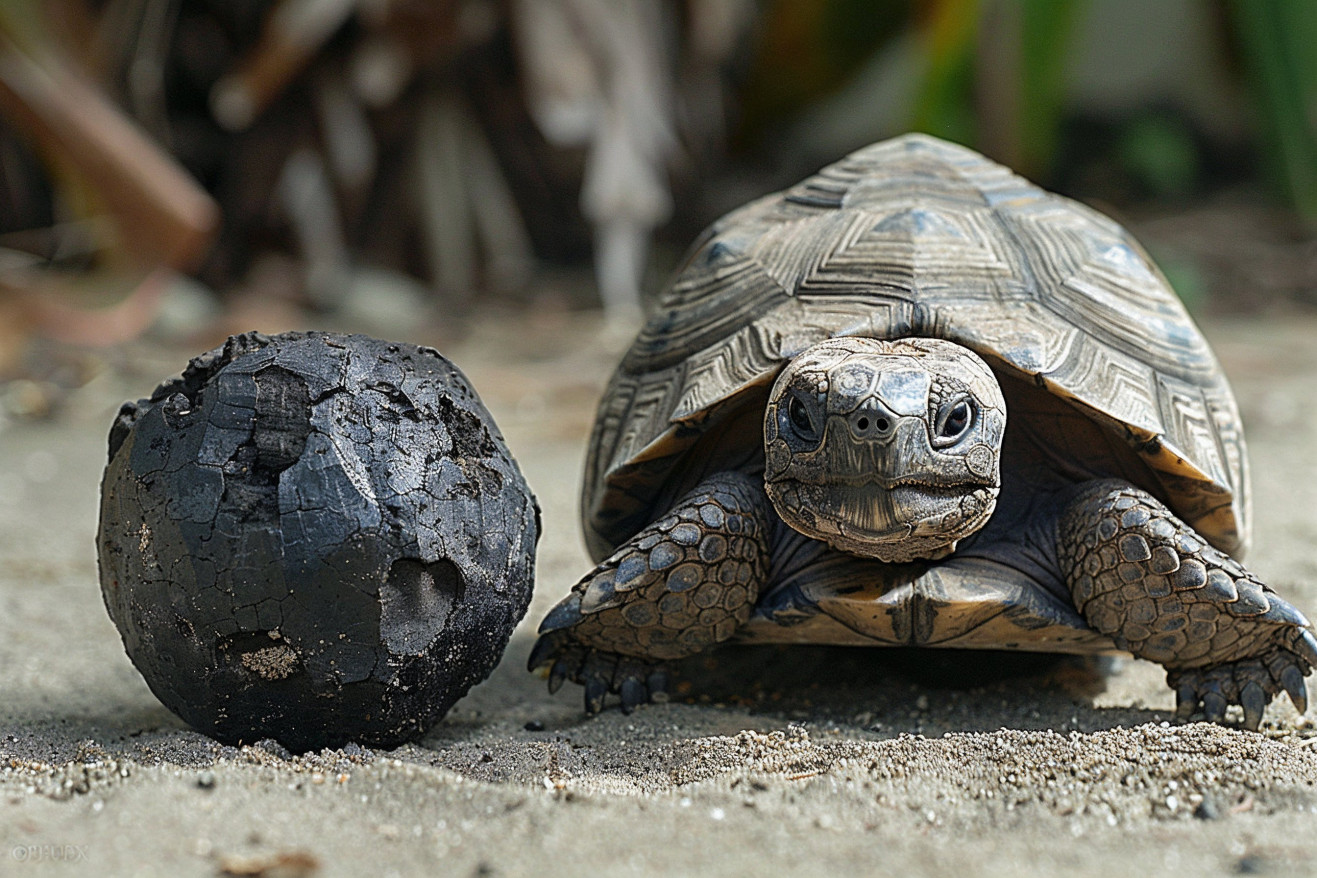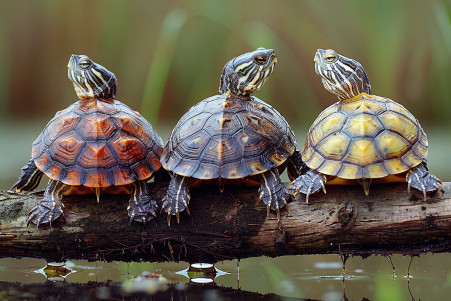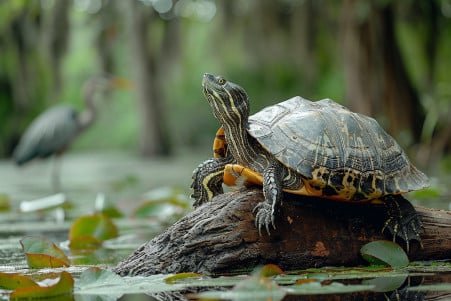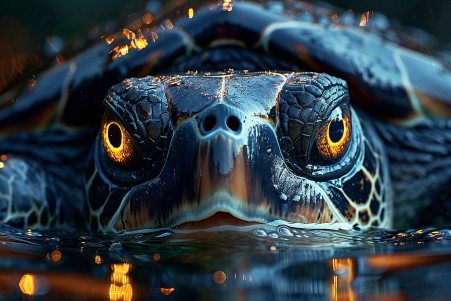Turtles and Black: The Evolution of Their Aversion
19 March 2024 • Updated 17 March 2024

Is there something about the color black that turtles know and we don’t? Is there something about the color black that turtles are evolutionarily predisposed to dislike? While turtles don’t “hate” the color black, they may have learned to avoid it because of their natural fear of predators, many of which are black. This is an important part of their survival in the wild.
In this article, we will look at a variety of scientific studies, from behavioral ecology to sensory biology, to try to understand why turtles have evolved to avoid the color black.
We will also look at how turtles’ perceptions of color have been shaped by their environment and evolutionary past, examining both lab-based research and research in the field. This will help us understand how color perception and animal behavior come together and help us learn more about these amazing animals.
Why do turtles hate the color black?
The Mystery of Turtles’ Color Vision
Turtles have some of the most interesting visual systems in the animal kingdom, and their color vision is no exception. The sensitivity of their cone cells is a result of the environment in which they live and the needs they have for their vision.
In her 2007 study, Erin M. Scott found that the retinas of Green Turtles (Chelonia mydas) are structured in a way that supports color vision, with oil droplets of different sizes and densities. This means that turtles are capable of seeing a variety of colors, including possibly ultraviolet light.
In a comparative study, Robson and Ariel found that Green Turtle hatchlings have a preference for blue light over other colors, which shows that they can see colors underwater. This is in contrast to the visual systems of other animals and is evolutionarily important, possibly helping the turtles find food and avoid predators. As a result, the role of color in turtles’ natural habitats is both important and necessary for their survival.
While there is little direct evidence of how turtles perceive the color black, their preference for shorter wavelengths like blue may mean that they have a negative reaction to darker colors, possibly because they are associated with the depths of open water or predators.
This is just one example of how the relationship between turtle vision and behavior is complex and shows how turtles have adapted to their marine environment. This sensitivity to color is important in shaping their interactions with the environment and helps them interpret color-based cues in everything from hunting to escaping.
Following the Moon: How Light Pollution Affects Sea Turtle Behavior
The moon has long been a guide for sea turtles as they navigate the ocean, but the introduction of artificial light has drastically changed their nocturnal environment. The Sea Turtle Conservancy explains that artificial light from coastal development can disrupt the turtles’ natural patterns, leading to confusion in nesting females and their offspring.
Nesting females may avoid beaches with artificial light, and the hatchlings can become disoriented by the light, mistaking it for the natural horizon and heading inland instead of toward the ocean.
Blair Witherington’s work notes that the difference in natural light between the ocean and the land is critical for the orientation of sea turtle hatchlings. Light pollution often confuses hatchlings, leading them away from the safety of the ocean and into dangerous environments where they are at risk from predators and dehydration.
The National Fish and Wildlife Foundation is funding projects to retrofit lighting to make it less disruptive to turtles, showing a community-wide move toward more turtle-friendly lighting options.
Environmental factors, such as light pollution, may lead to turtles being more wary of darker colors, which are harder to see under artificial light, and therefore more likely to lead to predation. It’s important to understand these factors as we work to save sea turtles in a world that’s increasingly impacted by artificial light.
Behavioral Studies That Shed Light on Turtles’ Color Preferences
To understand why turtles may prefer or avoid certain colors, it is necessary to look at their behavior. For example, one study that Turtle OMG mentions found that turtles are more sensitive to colors that are commonly found in their natural environment, like blues and greens, which are associated with water and vegetation.
This color sensitivity may have evolved to help turtles better navigate their surroundings, including finding food and hiding from predators. While this study didn’t find evidence that turtles dislike black, the fact that they preferred lighter and more saturated colors suggests that they may be less sensitive to darker colors.
Another study that was published on PubMed found that tortoises, which are closely related to turtles, showed a clear preference for red and yellow food stimuli. While this preference may not carry over to turtles, it suggests that color may be an important factor in the food choices of the broader order that includes both tortoises and turtles, Testudines.
A study that was published on ScienceDirect looked at how captive sea turtles use color and texture to choose which plastic debris to ingest. It found that the turtles showed a strong preference for colors that were light and similar to the colors of their natural prey, such as yellow. This suggests that turtles may be less likely to be attracted to darker colors, like black, and therefore avoid them.
These studies show that turtles’ color preferences are closely tied to the ways that they have adapted to their natural environment. For example, their wariness of darker colors, including black, may be a result of an evolutionary adaptation to avoid potential threats or unfavorable conditions. This insight into why turtles may prefer or avoid certain colors is important for the conservation of turtles and the ecosystems they inhabit.
Evolutionary and Ecological Significance of Color
Color has long been known to play a key role in animal behavior, impacting everything from sexual selection to the ability to avoid predators.
For example, a study in PLOS ONE found that the color of an observer’s shirt affected the escape behavior of western fence lizards, which supported the species-specific confidence hypothesis. This means that animals, including reptiles like turtles, may be more comfortable with colors that match their own signaling colors, a finding that can help explain potential turtle responses.
In color psychology, this kind of attraction or aversion to colors is important. An article in PMC explains that color vision, which has evolved in response to a range of environmental pressures, is critical for the behavioral success of species in terms of foraging and mate choice. For example, in fish, male mate choice has led to the evolution of bright female coloration, which shows how important color signals are in reproductive success.
Moreover, as described in ScienceDirect, animals’ color changes can signal important information about their physiological condition or intentions to conspecifics or predators in the context of dynamic color communication. These dynamic signals are a key part of animals’ behavioral repertoires and can influence survival strategies, mating, and communication.
The impact of color on animal behavior is a complex network that mirrors the interaction of evolutionary biology, ecology, and sensory perception. These studies not only reveal the intricate function that color has in the animal kingdom but also offer a comparative framework for understanding why turtles may shun the color black.
Turtles and the Color Black: What Do Turtles See?
Our investigation into the mystery of turtles and their relationship with the color black has uncovered several important points that shed light on their strange aversion. The biological details of turtle vision mean that they are predisposed to certain colors that are important for their survival, like the bright blues and greens of their oceanic environments.
Meanwhile, environmental factors, especially the impact of light pollution on their behavior, play a major role in their color preferences and their important nocturnal activities.
Studies of turtle behavior show that, like the other animals discussed in the PMC study, turtles have developed color preferences that are closely related to their needs and instincts in their environments. Meanwhile, the animal behavior comparison from ScienceDirect shows that color is used for communication, mating, and defense purposes across species, which helps to put turtles’ relationship with color in context.
Not only is this information important for scholars, but it’s also important for the conservation and management of turtles. As we learn more about the many factors that influence turtle color vision, future studies will undoubtedly reveal more about the behavioral ecology of these animals, which will help us protect them.
This kind of interdisciplinary research shows how important it is to understand the complex factors that influence animal behavior and how that knowledge can be used to drive innovation and social change.


